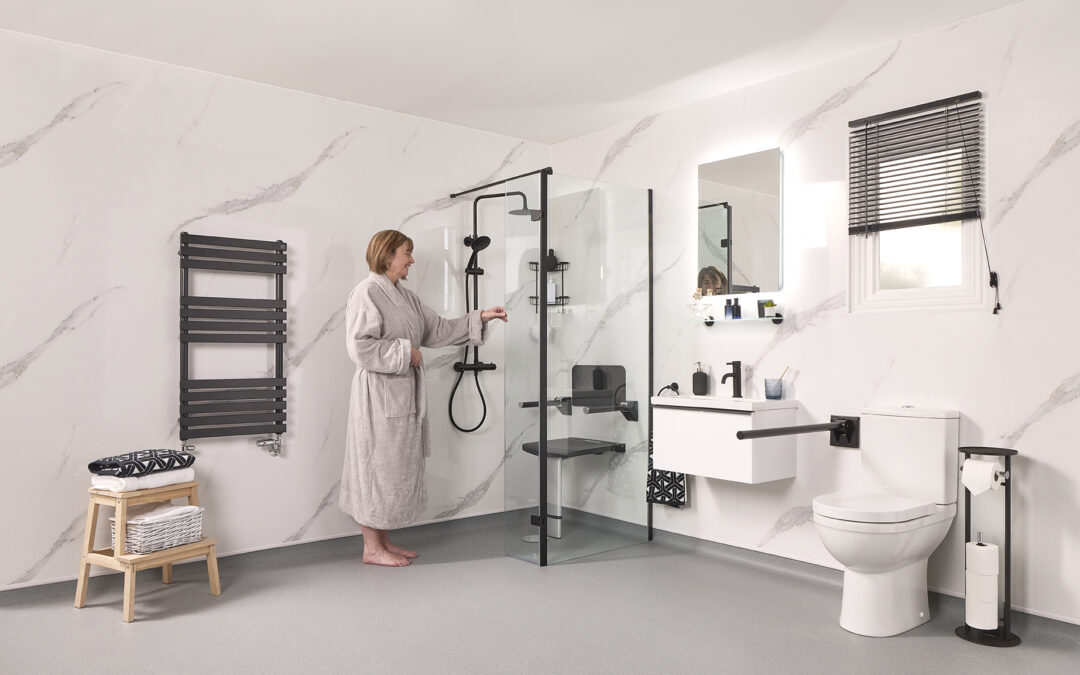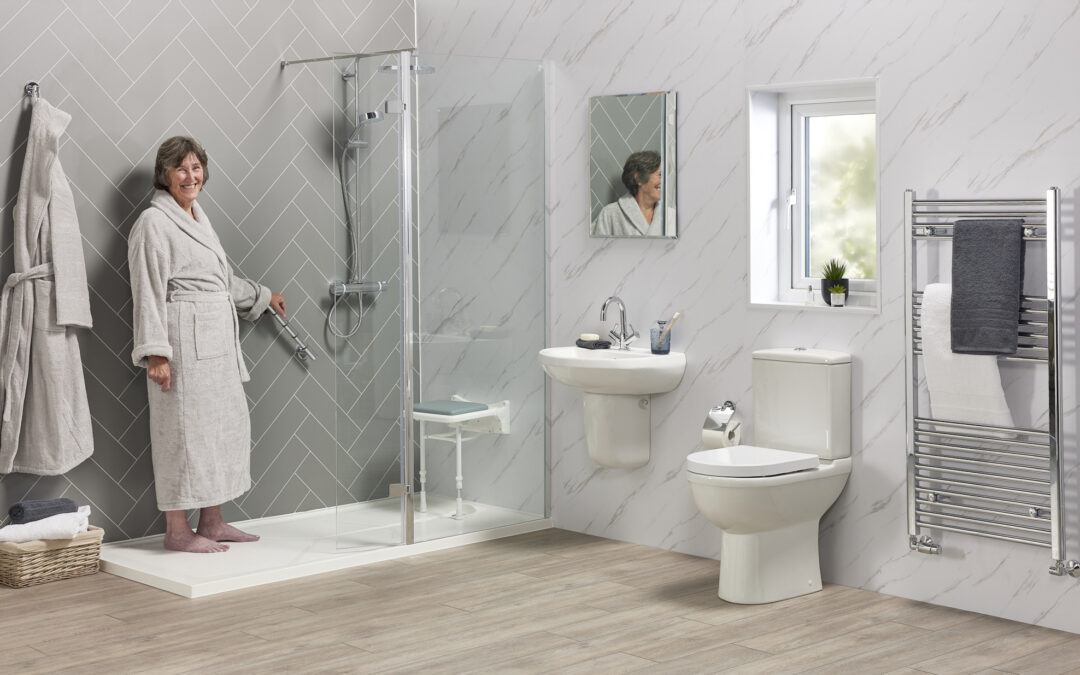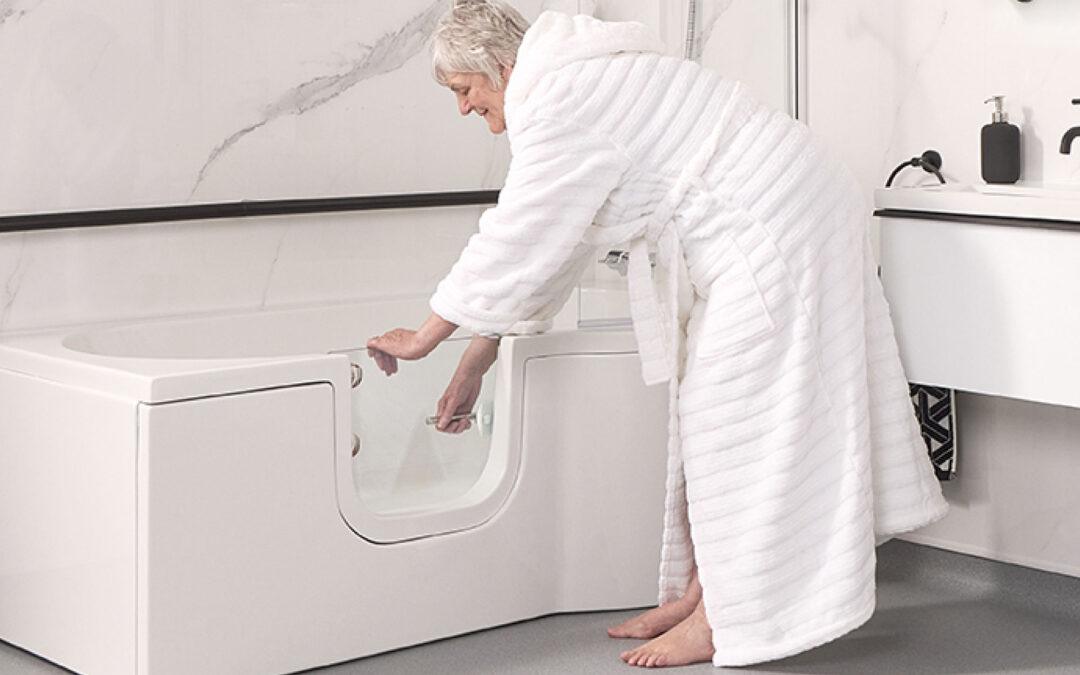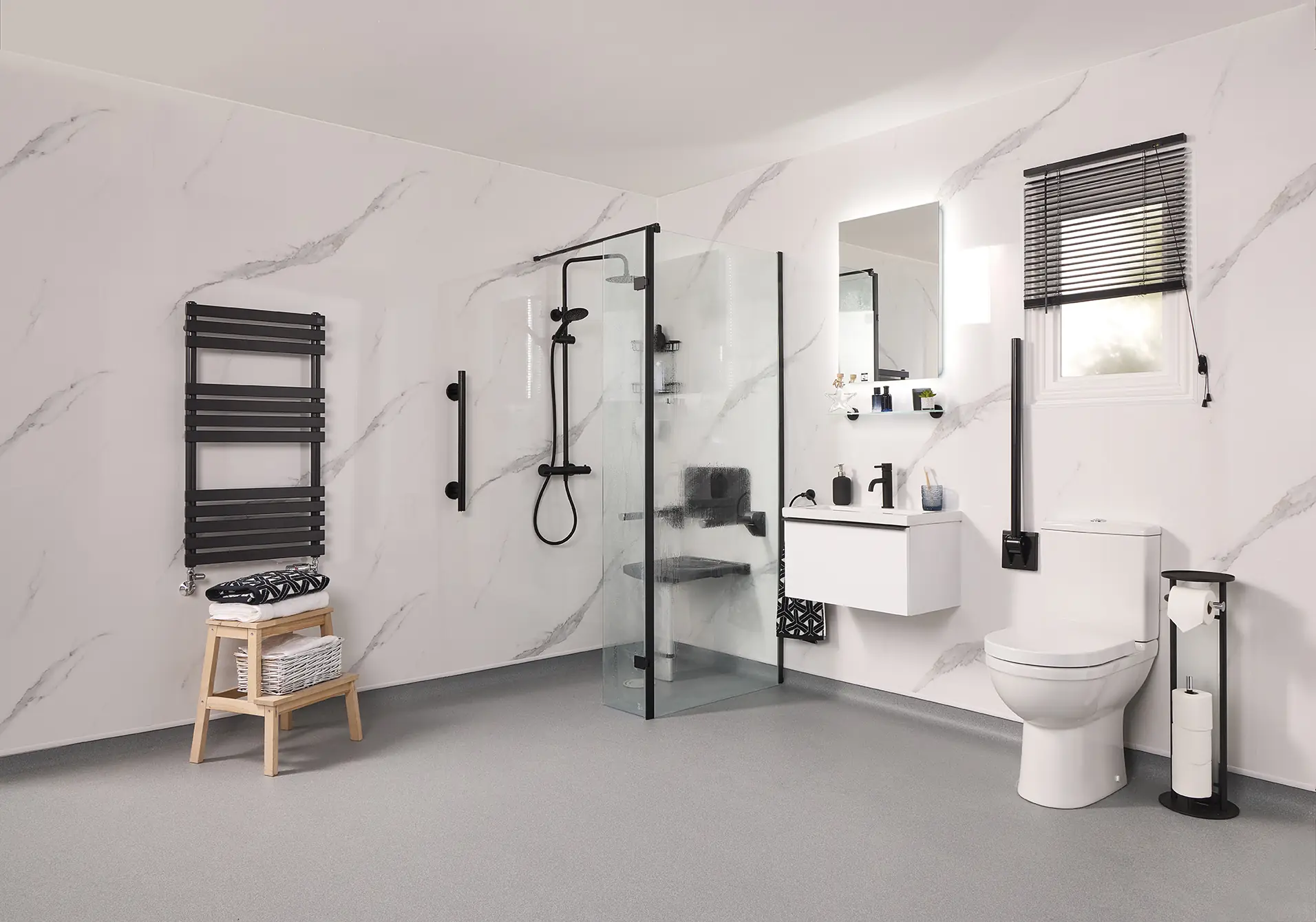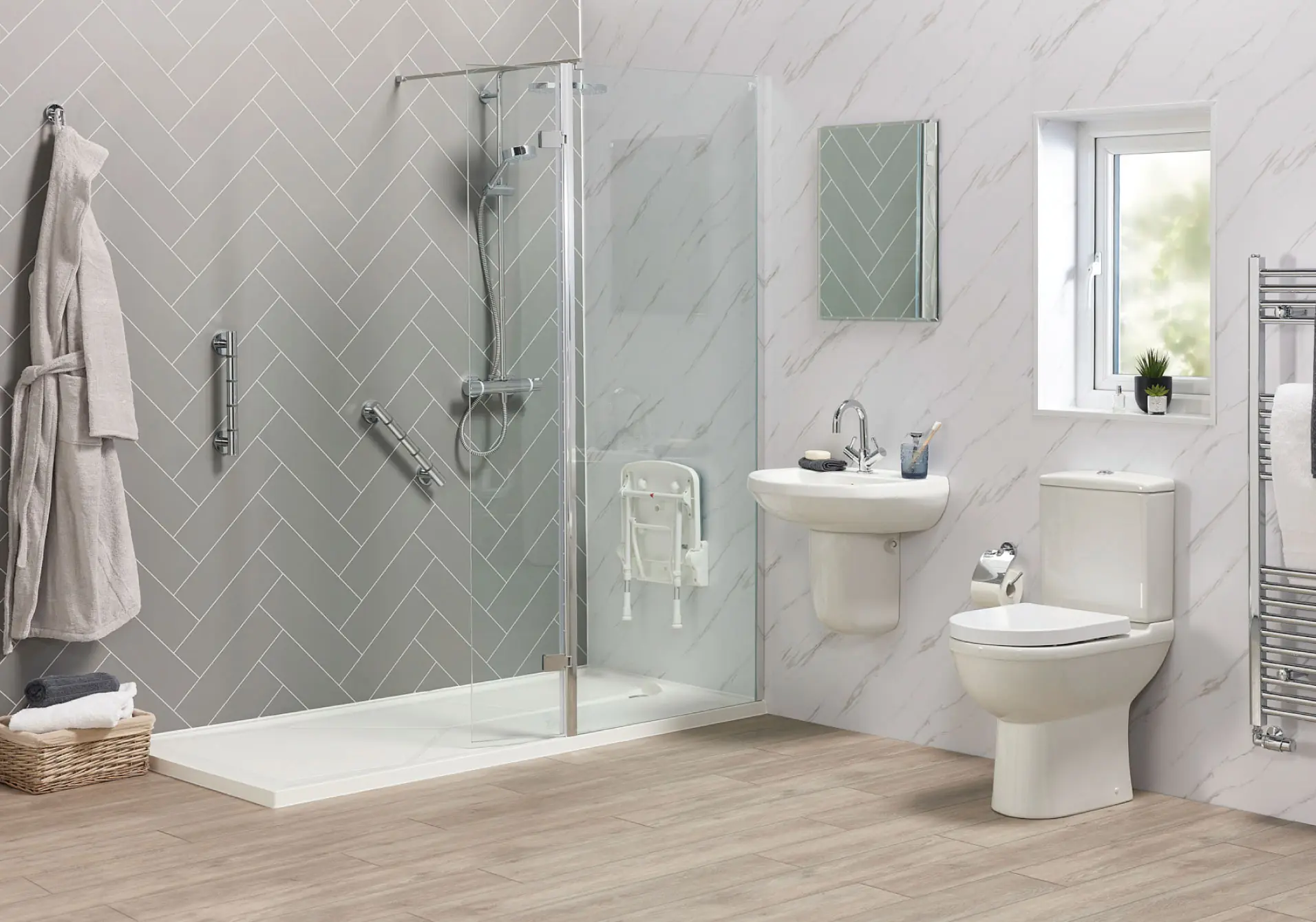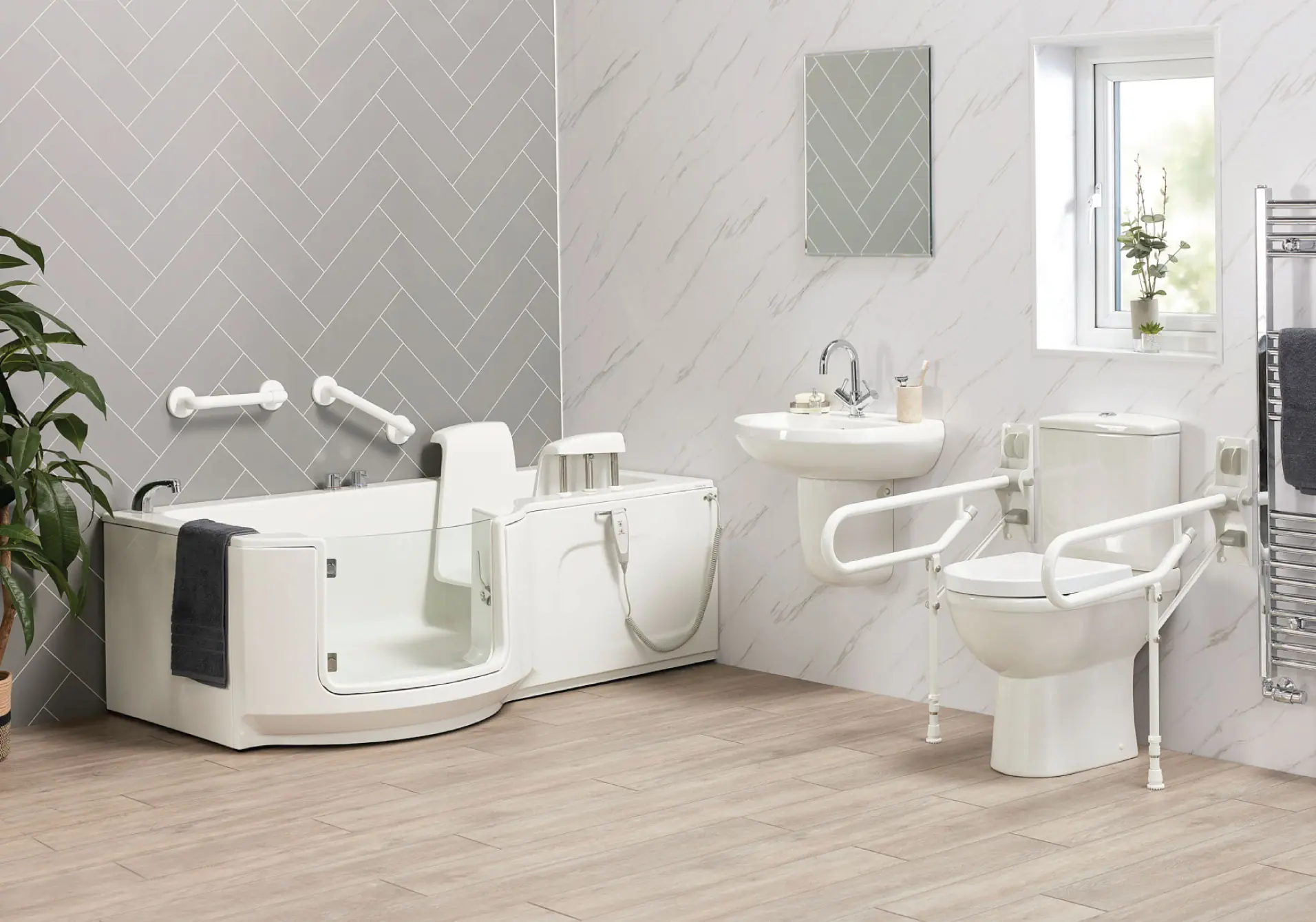Table of Contents
- 1. Why Getting In & Out of the Bath Becomes Difficult
- 2. ✅ Quick Bath Safety Checklist
- 3. Step-by-Step Guide – Getting Into and Out of a Regular Tub Safely
- 4. 7 Bath Aids and Accessories That Really Help
- 5. What’s the Right Bathing Solution for Your Situation
- 6. Case Study: How a Simple Change Made a Big Difference
- 7. UK-Specific Costs, & VAT Relief
- 8. FAQ
- Checklist Before You Decide
- 📞 Talk to the Experts
Bathing is more than just cleanliness—it’s comfort, dignity, and independence. Yet for many seniors or individuals coping with mobility issues, stepping in and out of a traditional bathtub can be a source of anxiety or even danger. Whether due to joint pain, reduced grip strength, or balance challenges, these everyday tasks can become risk points.
At EA Mobility, with over 20 years of experience designing accessible bathing solutions, we understand those challenges. In this guide you’ll find:
-
Common reasons why bath access becomes difficult
-
A safety checklist to reduce risks before you bathe
-
A step-by-step method for getting in and out of a standard bathtub safely
-
Shower-side aids, bath aids, and accessibility equipment that can help immediately
-
Alternatives (walk-in baths, showers, wet rooms) for more drastic or long-term solutions
-
Information on cost, & VAT relief where available in the UK
-
Real stories / case examples
-
FAQs to answer your burning questions
By the end of this article, you’ll feel more confident about making bathing safer—for you or your loved one.
1. Why Getting In & Out of the Bath Becomes Difficult
| Common Mobility Challenge | How It Impacts Bathing |
|---|---|
| Joint stiffness, knee / hip pain | Difficult to lift your leg over high bath edges, or to bend safely inside tub. |
| Weak grip or arm strength | Hard to hold onto rails, push up or balance, especially on slippery surfaces. |
| Balance issues, dizziness, fatigue | Increased risk of slips, trips; fear of falling can lead to rushing, which increases risk. |
| Poor vision or reaction times | Hard to judge depth, height, or to see wet surfaces and edges clearly. |
| Weight / strength limitations | Standard aids might not support high weight; strain on caregivers. |
2. ✅ Quick Bath Safety Checklist
Keep this list visible by your bathroom door, mirror, or cabinet. Use every time you’re preparing to bathe.
-
Dry the floor thoroughly (before, during, after) to avoid slipping.
-
Use non-slip mats both inside and outside the tub.
-
Check water temperature: aim for 37-38°C to avoid scalds.
-
Ensure grab bars / rails are securely installed and within reach.
-
Have any remotes or controls (shower, bath, safety lifts) positioned so you can reach them without stretching.
-
Don’t rush: move one limb at a time, avoid sudden twists or lifts.
-
Keep a fall or medical alarm / mobile phone nearby.
-
Check lighting: ensure the area is well lit. Consider night lights.
3. Step-by-Step Guide – Getting Into and Out of a Regular Tub Safely
These steps are designed for someone who has some mobility but needs to minimise risk. Adjust as needed, and don’t force anything your body isn’t ready for.
| Phase | Steps | Tips / Modifications |
|---|---|---|
| Getting In | 1. Place all aids (grab bars, non-slip mats, seat) in place. 2. Sit on a stable chair or on the tub edge—don’t lean forward too much. 3. Slide forward so your bottom is over the tub edge. 4. Bring one leg into the tub first, then the other slowly. 5. Use your arms or grab handles to lower gently into a seated position. |
If hips/knees are stiff, use a swivel seat. If you have very little strength, consider a transfer bench or powered lift. |
| Getting Out | 1. Sit forward on the tub seat or edge. 2. Bring both feet flat inside the tub and position firmly. 3. Use grab bars or rails to push up gradually. 4. If needed, rise first to knees, then to feet. 5. Step one foot outside onto a non-slip mat, then the other. 6. Stand with support—grab rail or frame—to ensure balance. |
If doing this with someone supporting you, ensure they use their forearm, not just a hand pull, to avoid strain. Take |
4. 7 Bath Aids and Accessories That Really Help
Here are tools that can make a noticeable difference. Choose based on your level of mobility, strength, and needs.
| Aid | What It Does | Considerations |
|---|---|---|
| Bath Seats / Cushions / Chairs | Raises your seated position, reducing how far you have to lower yourself. Swivel options help turn. Cushions can be inflatable and portable. | Check weight capacity. If using seat inside tub, ensure stable fit, no wobbling. Swivel seats need clear space. |
| Grab Bars & Rails | Offer support to steady hands, assist standing or sitting. Vertical/horizontal placement adds flexibility. | Must be correctly installed (e.g. into wall studs), textured or non-slip surface helps. |
| Bath Steps & Stools | Bring the floor closer to the tub’s edge so stepping in is easier. | Choose non-slip surfaces. Height adjustability helps. Avoid wobbly or lightweight options. |
| Transfer Benches & Boards | Allow you to sit outside the tub and slide over, reducing need to lift legs. | Some transfer benches require space around tub; ensure stable base. Waterproof materials are better. |
| Bath Lifts & Hoists | Motorised or air-inflated lifts raise/lower you with minimal effort. Good for low strength or frequent use. | Consider whether plug access is available; battery life; safe fastenings. Maintenance is key. |
| Walk-In Baths, Low-Threshold Showers & Wet Rooms | These reduce or remove the step or hurdle altogether—doors, level access. Best long-term solutions. | More expensive; may require major installation; check floor support; ensure waterproofing. |
| Smart Safety Accessories | Temperature-limiting taps; remote-controlled jets or lifts; fold-down seats; anti-slip full-length mats with mould control. | Need correct installation; maintain regularly; ensure electrical items are compliant. |
👩⚕️ Caregivers: Offer your forearm—not your hand—as support to reduce joint strain and avoid injury.
5. What’s the Right Bathing Solution for Your Situation
To choose well, answer these:
-
How high can you comfortably lift your leg?
-
If yes → simpler aids (grab rails, steps).
-
If no → look at powered seats, walk-in baths.
-
-
How much upper body strength / grip do you have?
-
Strong → static seats or simple benches may suffice.
-
Weak → powered aids, or aids that minimise grip-requirement.
-
-
How stable is your balance / vision?
-
Unstable or poor vision → high-contrast rails, strong lighting, fully flush shower / wet room might be safer.
-
-
How often will the bath be used, and by whom?
-
If used daily / by multiple people → invest in durable / powered solutions.
-
If occasional → lower-cost aids might do.
-
-
What’s your budget & what support is available?
-
VAT relief might reduce cost.
-
Think lifespan & maintenance cost, not just upfront
-
6. Case Study: How a Simple Change Made a Big Difference
Mrs. A, age 78, had difficulty stepping over her standard 60-cm tub edge. She struggled with knee pain and was afraid of slipping. We installed a walk-in bath + stable transfer bench + one heavy-duty grab rail. Within two weeks, she bathed with >70% less assistance, felt more confident, and said the process felt safer.
Mr. B, age 65, with weak grip strength and balance issues. We fitted a swivel bath chair and lowered threshold walk-in shower. He now showers more regularly, feels less tired, and avoids the daily strain of lifting his leg.
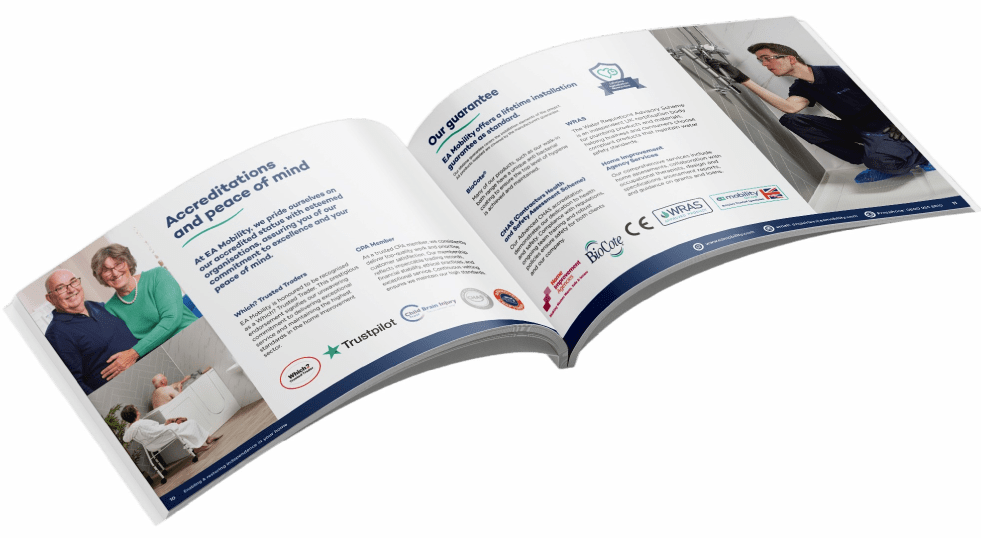

Request a Brochure
Receive a FREE copy of our latest full-colour brochure and browse our range of assisted and independent bathing products from the comfort of your own home.
7. UK-Specific Costs, & VAT Relief
-
Under UK law, some bath adaptations qualify for VAT relief (for medical / mobility needs). Our home assessors will be able to advise you on eligibility.
-
Typical costs:
Adaptation Ballpark Cost-Range* Grab rails, non-slip mats £30-£150 Transfer bench / bath stool £80-£500 Powered bath seat / lift £800-£3,000+ Walk-in bath or full wet room £3,000-£10,000+, depending on installation & complexity
* Prices vary with region, materials, and special customisation.
8. FAQ
Q: Can I make my existing bathtub safer without rebuilding the whole bathroom?
A: Yes. Adding grab bars, non-slip mats, seats, transfers benches or bath lifts are effective and far less invasive than full renovations.
Q: How do I choose between walk-in baths vs. wet rooms vs. a lift?
A: It depends on your mobility level, budget, available space, and safety priorities. Walk-in baths offer a safer way in/out, wet rooms remove threshold issues altogether, and lifts help where physical strength is limited.
Q: Are powered bath seats safe for elderly users?
A: When properly installed and maintained, yes. Ensure the power source is safe, the seat is rated for the user’s weight, and there’s backup support (rails, non-electrical aids) in case of power failures.
Q: How often should I replace safety mats or check rails?
A: Non-slip mats: at least yearly or when signs of wear appear. Rails: check screws, fittings, rust (if any) every 6-12 months. Any looseness must be fixed immediately.
Q: Can caregivers help without hurting themselves?
A: Yes. Use techniques that avoid lifting by hand—use arms, forearms; have stable supports; share load; don’t twist. Training or consultation can help caregivers.
Checklist Before You Decide
-
Measure your bath height, depth, width.
-
Test if doorways & floor support can accommodate heavier aids or walkers.
-
Check power sockets (for powered seats, lifts).
-
Evaluate whether maintenance, cleaning, and waterproofing are feasible.
-
Consider future needs (will mobility decline further?). Pick solutions with flexibility.
-
Compare providers: get quotes, check guarantees (EA Mobility offers lifetime install guarantee).
📞 Talk to the Experts
Getting in and out of the bath doesn’t have to be a cause of worry. With the right aids, safety checks, and possibly choosing better-access alternatives, you can regain confidence, preserve your independence, and reduce risk.
Want a bathing solution tailored just for you? At EA Mobility, we offer free home assessments to measure your space, understand your needs, and design a safe, stylish solution that matches your requirements.
👉 Request your free brochure or schedule a home visit today. Let’s make bath time safe and serene again.
EA Mobility – Beautiful, safe bathrooms built around you.




